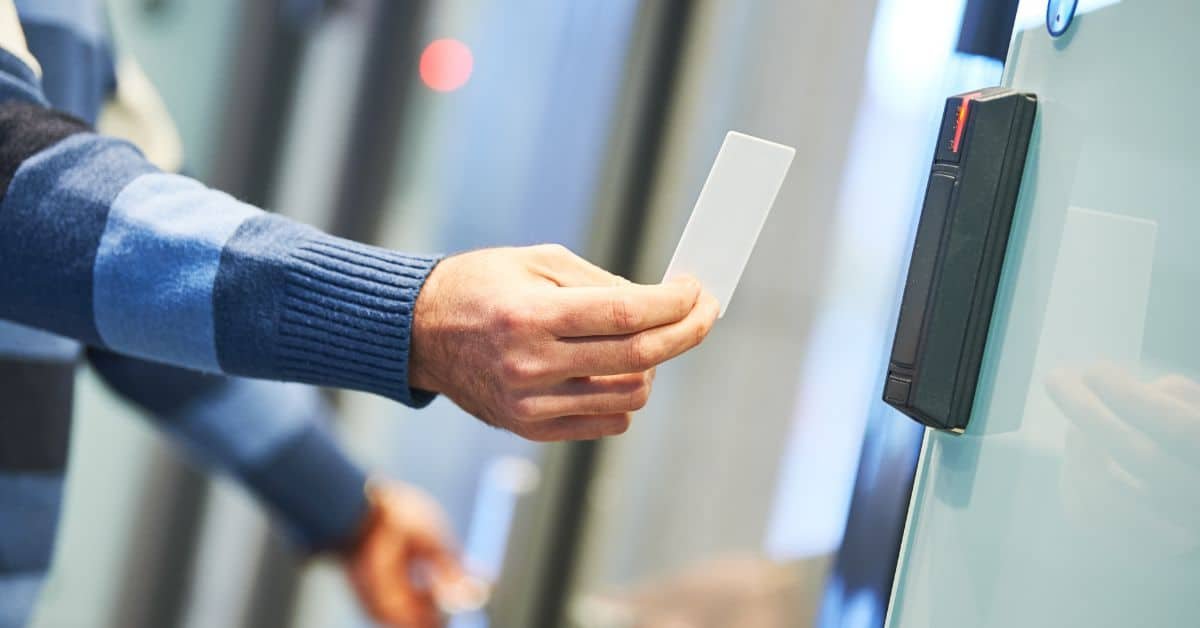Technology has advanced to provide many powerful systems for business security. This is a good thing because maintaining a secure business facility is essential not only for the safety of personnel but also for the protection of sensitive data and assets.
Key card access control systems have become a staple in securing premises, offering both convenience and advanced security. But how exactly do these systems work, and what makes them so effective? Whether you’re a business owner or simply interested in security technology, learn some basic information below.
Components of Key Card Access Control Systems
To understand how key card access control systems function, it’s important to first grasp their core components.
Key Cards
Key cards are at the heart of these systems. They contain unique identifying information encoded within magnetic stripes or embedded chips. Cards come in various types, such as proximity cards, smart cards, and magnetic stripe cards.
Card Readers
These devices decode the information on the key cards and verify the user’s credentials. Different types of card readers align with specific key card technologies and can be standalone units or networked to a central system to ease access management.
Access Control Panels
Access control panels are the system’s brains. They determine whether entry should be granted by comparing the scanned card data against predefined access permissions stored in the system’s database. If the credentials match allowed entries, the panel sends a signal to unlock the door.
How the System Operates
When an individual approaches an access-controlled area, they present their key card to a reader. The reader communicates with the access control panel to verify the cardholder’s credentials without the need for physical contact.
Once verified, the system executes a programmed protocol based on time, location, and specific permissions. Doors automatically unlock for users with valid credentials, while unauthorized attempts are logged for security auditing.
On the back end, system administrators manage access permissions via specialized software. This software enables real-time tracking of access attempts, allowing businesses to monitor who enters and exits specific areas.
Advantages of Key Card Systems
Transitioning to a key card access control system offers many benefits. Beyond improving security and thereby helping you avoid the risks of poor security at your company, key card access control systems have the following helpful qualities:
- Flexibility: Allows for easy updates of access permissions without physical recoding.
- Detailed reporting: Provides robust logs of entry and exit activities for auditing and investigations.
- Scalability: Accommodates expansion or reduction of access points in line with business needs.
Considerations for Implementation
While key card systems present many benefits, thoughtful consideration during implementation is crucial.
For example, key cards shouldn’t be your only line of defense. You should integrate them with existing infrastructure, like security alarms or surveillance systems, to create a cohesive security network.
Additionally, given that these systems are often integrated with company networks, it’s vital to implement robust cybersecurity measures to prevent unauthorized access to sensitive data.
Finally, you have to make sure your staff know how to use the cards and not lose them.
Key card access control systems may not be the most technologically advanced security solution out there, but they remain a practical option. Now that you know how they work, you can decide if they’re right for your premises.
Read more articles:
IQAX: Paperless Bill of Lading Pioneer
Act! – Foster Customer Relationships & Drive SMB Profitability with CRM

I am the Senior Editor at CIO TechWorld. With over a decade of experience in the media and publishing industry, I specialize in research and collaborate with technology companies to bring their stories to life. Explore my articles on CIO TechWorld, where I offer unique perspectives on technology topics.








